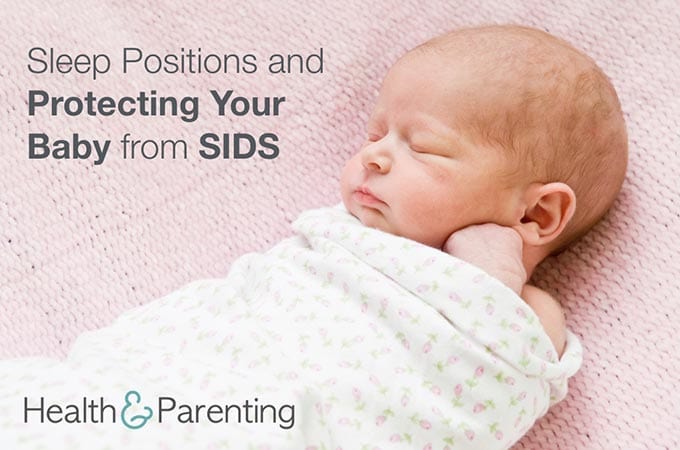Picture for a minute what sleep positions you default to at night. Are you someone who curls up in the fetal position? Do you like to sprawl out and take up most of the bed? Are you the little or big spoon in your relationship? And have you ever been accused of stealing the covers and kicking in your sleep?
Okay, that last one was mostly just for fun—it really has nothing at all to do with how you put your baby to sleep. But surely those questions got you thinking about how you’re most comfortable sleeping, which may have you reflecting on your baby’s sleep positions as well. Should you just let him or her curl into whatever position is comfortable? Or is it your job to make those decisions for your little one?
In the beginning, the first several months at least, that choice is all on you; your baby has very little control over how he or she sleeps. But the way you position them can reduce the risk of Sudden Infant Death Syndrome (SIDS) according to the American Academy of Pediatrics. Back is best, which means that no matter what your parents say about how you slept as an infant (they probably put you on your stomach, but we know more now), your little one will be safest if you put him or her on their back to rest. Not on their stomach or side; remember, back is best.
Now, as they get a little older, babies will start shifting and moving themselves into the sleep positions they prefer. Once rolling starts up, there is only so much you can do to keep them on their backs. But you can follow these other tips to keep the risk of SIDS down.
- Put Out the Cigarettes: Smoking during pregnancy puts your baby at a three times greater risk of SIDS, and smoking around your infant can be just as damaging. So if you haven’t quit yet, now is a great time to start working towards that goal!
- Keep the Bedding Safe: Sure, bumpers, stuffed animals, and big, frilly blankets all look great in a crib—but they aren’t safe. Keep bedding simple and tight; nothing that your little one could get wound up in or suffocate as a result of. Sleep sacks are a great alternative to blankets for keeping your baby both warm and safe.
- Breastfeed: Breastfed babies appear to have a 50 percent reduced risk of SIDS.
- The right mattress: Don’t use mattresses made from foam rubber or memory foam.
Don’t buy products that claim to reduce the risk of SIDS, such as wedges, home heart or breathing monitors. Research shows that these monitors that claim to be able to detect SIDS and other life-threatening events are not effective at detecting or reducing SIDS. Only use them when prescribed by healthcare providers.
Written by Leah Campbell, infertility advocate, adoptive mama, writer and editor. Find me @sifinalaska on Twitter.
This information is not intended to replace the advice of a trained medical doctor. Health & Parenting Ltd disclaims any liability for the decisions you make based on this information, which is provided to you on a general informational basis only and not as a substitute for personalized medical advice. All contents copyright Health & Parenting Ltd 2016. All rights reserved.










